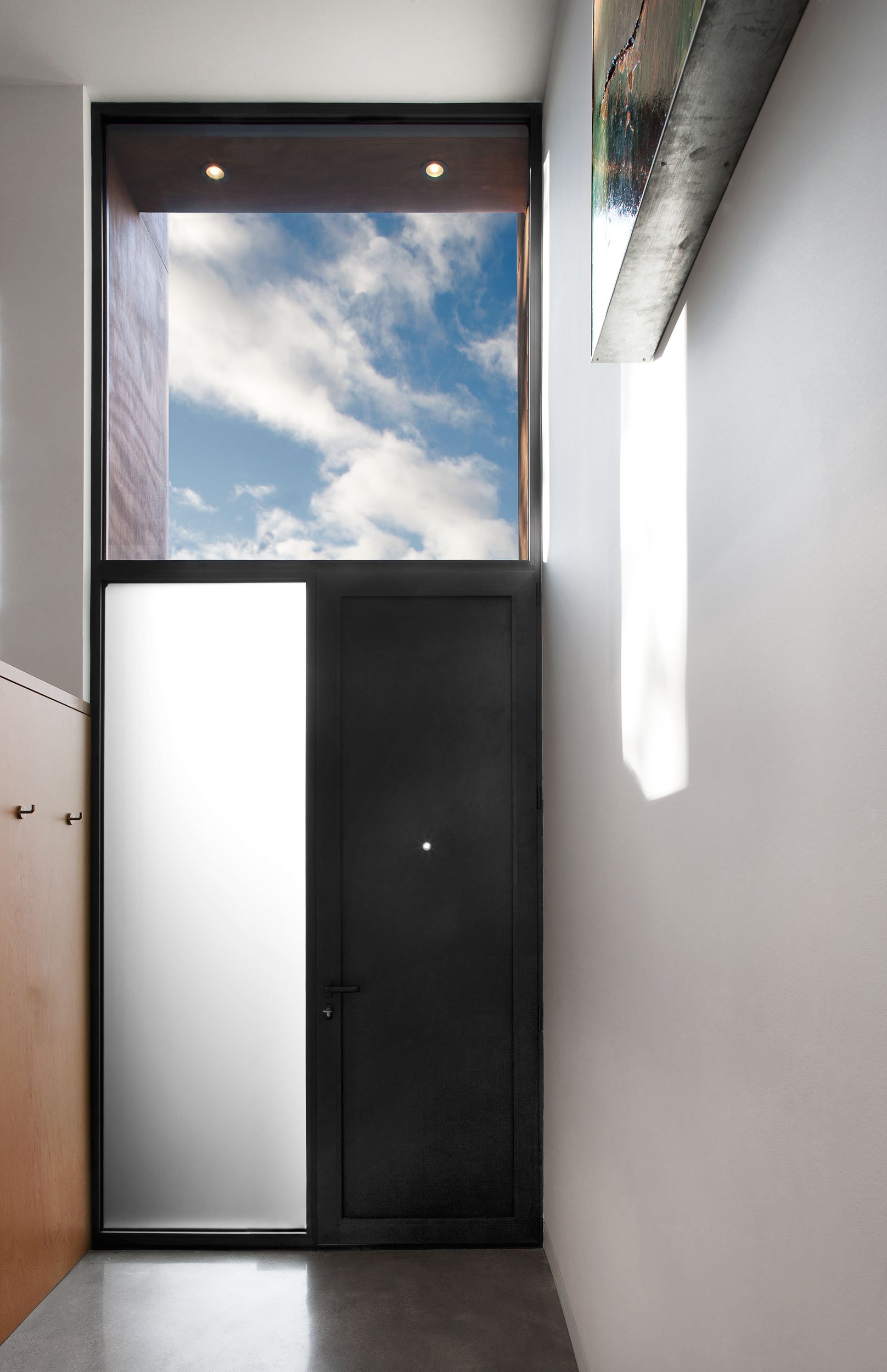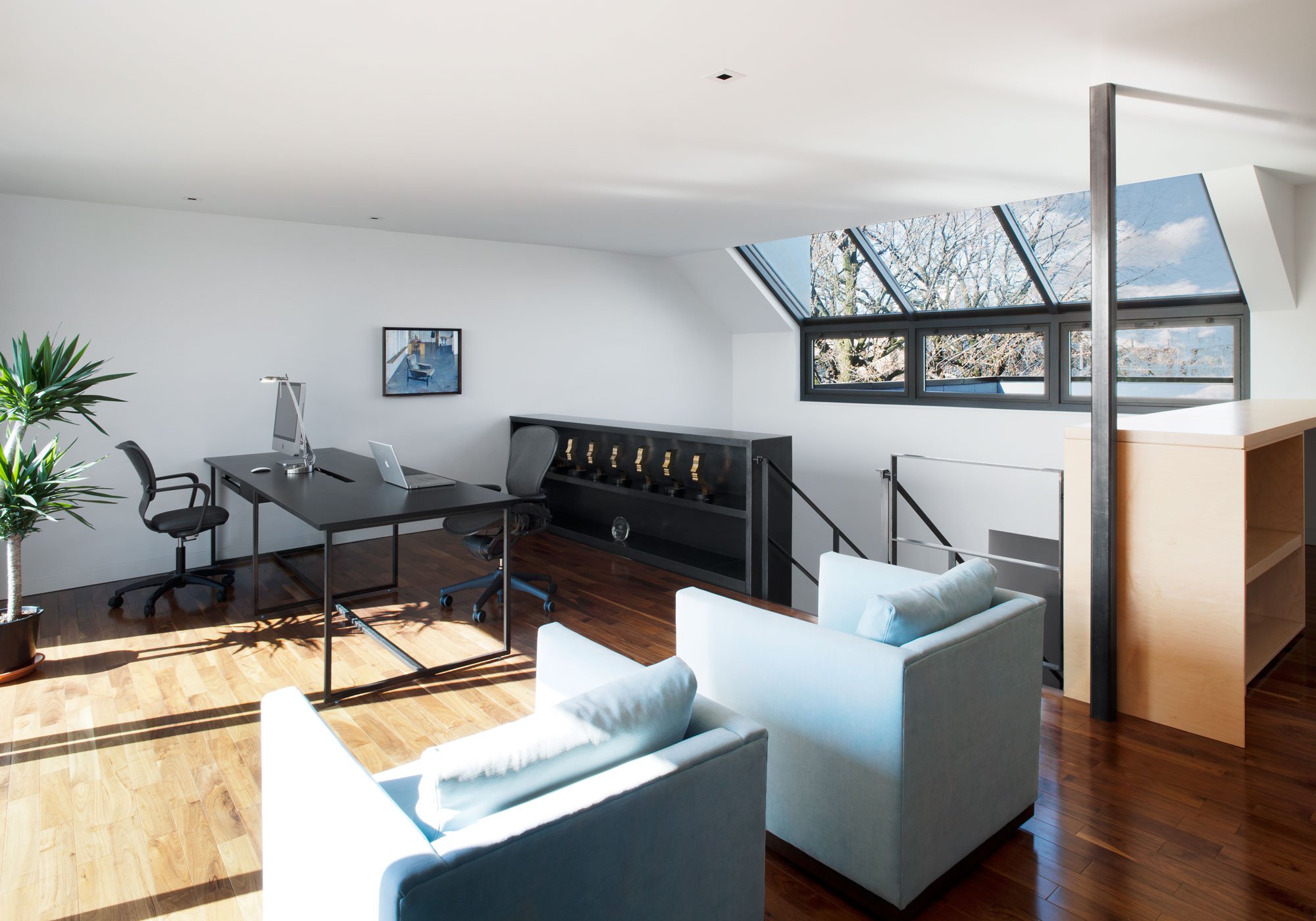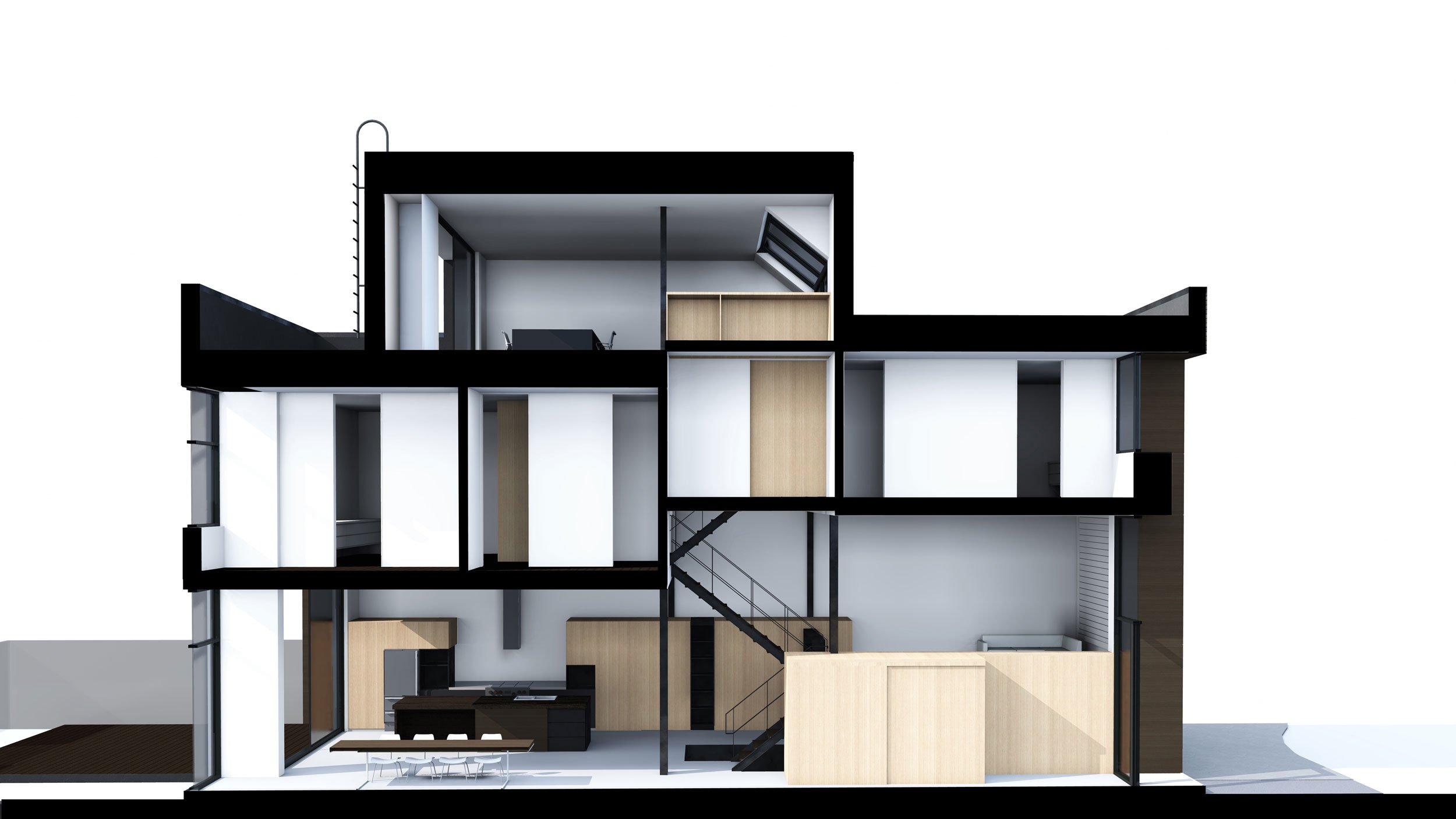E3 House by Natalie Dionne
Architects: Natalie Dionne
Location: Montreal, Quebec, Canada
Area: 3,230 sqft
Photo courtesy: Marc Cramer
Description:
The E3 House gets its name on the grounds that Natalie Dionne Architecte, the spouse and-wife group of Natalie Dionne and Martin Laneuville, composed the outline in cross-area, utilizing a procedure that reviews pioneer Viennese draftsman Adolf Loos’ powerful Raumplan, with its stunned rooms and liquid moves between floors.
The E3 House is situated in a clamoring neighborhood close to the extremely prominent Jean-Talon Market in Montreal. It was intended for a family with a profound connection to the area; the folks work in theater, film, and TV, and the youngsters are youthful grown-ups.
The outside geometry of the living arrangement is a basic parallelepiped characterized by two to a great extent fenestrated dividers on the east and west sides and party dividers toward the north and south. The introduction of the part roused the outline of a multi-level house that empowers regular light to enter. The floors are lurched on either side of the 12-meter-high focal chamber that partitions the house into two volumes, front and back; a staircase, finished with a bay window, interfaces the diverse levels.
The expansive windows arranged at both closures of the house and the focal sky facing window permit the sun to achieve profound into the inside to make constantly changing plays of regular light and shadow. Along these lines, the inside environment adjusts as indicated by the season of day and the season. Vast wooden screens slide before the windows in every space to channel the light at day break and dusk. To guarantee characteristic ventilation, the windows are confronting one another and they all open, as do those in the sky facing window. The shades additionally shield the house from summer heat.
The house is called E3 on the grounds that it is sorted out around the cross area of the building. The cross-sectional drawing looks like a capital E connected to a regressive E by the converging staircase. Every living space and room is on a different level. The staircase interfaces the six rooms in the house, driving at last to a mezzanine studio and a porch with a perspective of famous Mount Royal. On the other side, the bay window watches out on a green rooftop framework, where a little field of lavender will be planted.
The rooms open onto the focal space through wide rotating or sliding entryways, which grow the space, permit light to enter, and make a profundity of points of view. At the point when the entryways are shut, the space is pulled back, taking into consideration separation, security, and examination.
The volume is organized by incorporated engineering components and completes that contribute a graphical and sculptural quality to the space. The focal staircase, light and breezy, and the great kitchen island both component steel and walnut. Cupboards, closets and storage rooms, made with maple-finish plywood, are vertically masterminded to make multi-utilitarian, multi-level stone monuments. Outside, marine-evaluation plywood recolored to a dim coffee shading lines the dividers and roofs of huge recesses to stamp both front and back doorways. The undertaking’s system incorporates a code of materials with basic, tedious hues: finished solid, normal steel, wood and blue tiles. The interchange of these materials makes staggering graphical organizations that take after conceptual depictions.
Thank you for reading this article!

































